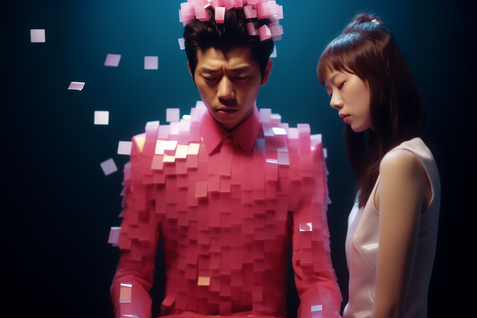
Pixelated Perception
"Pixelated Perception" explores the complex confluence of the digital and the tangible, highlighting the diverse transitions in Japan. In the 1990s, pixels, the minute elements of the digital realm, emerged prominently in platforms like mobile phone communications and instances of censorship, subtly altering our perception of reality. Using AI generation, Kusano crafts portraits of individuals who, though they don't exist in fact, resonate profoundly in our memories and senses, employing the pixelated effect as a symbolic presence.
Pixels signify the fragmented pieces of our identity and understanding in this digital era. This work's aesthetic, reminiscent of video games, questions the overly pop-consumed roles of men and women, suggesting that these roles are, after all, fictional constructs.
This glitch prompts us to reflect on the interplay between reality and the virtual, encouraging a reevaluation of our perspectives and the freedom to envision differently.

Secondary Market (OpenSea):

























